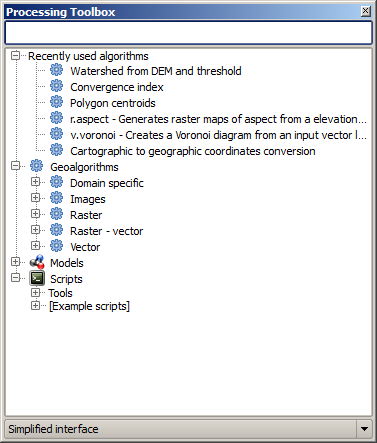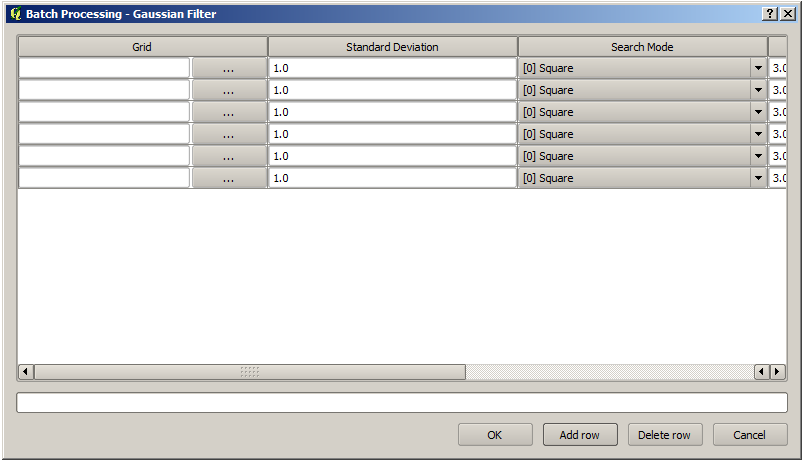.
Introducción¶
This chapter introduces the QGIS processing framework, a geoprocessing environment that can be used to call native and third-party algorithms from QGIS, making your spatial analysis tasks more productive and easy to accomplish.
En las siguientes secciones, revisaremos cómo usar los elementos gráficos de este sistema y sacar el máximo provecho de cada uno de ellos.
There are four basic elements in the framework GUI, which are used to run algorithms for different purposes. Choosing one tool or another will depend on the kind of analysis that is to be performed and the particular characteristics of each user and project. All of them (except for the batch processing interface, which is called from the toolbox, as we will see) can be accessed from the Processing menu item. (You will see more than four entries. The remaining ones are not used to execute algorithms and will be explained later in this chapter.)
La caja de herramientas. El elemento principal de la IUG, se usa para ejecutar un solo algoritmo o grupo de procesos sobre la base de ese algoritmo.
Figure Processing 1:
El modelador gráfico. Varios algoritmos se pueden combinar graficamente usando el modelador para definir un flujo de trabajo, creando un proceso individual que involucre varios subprocesos.
Figure Processing 2:
El administrador del historial. Todas las acciones que se llevan acabo mediante cualquiera de los elementos mencionados se almacenan en un archivo de la historia y puede ser posteriormente producido usando el administrador del historial.
Figure Processing 3:
La interfaz de procesamiento por lote. Esta interfaz permite que ejecute procesos por lote y automatizar la ejecución de un solo algoritmo a múltiples conjuntos de datos.
Figure Processing 4:
En las siguientes secciones, revisaremos cada uno de los elementos a detalle.




